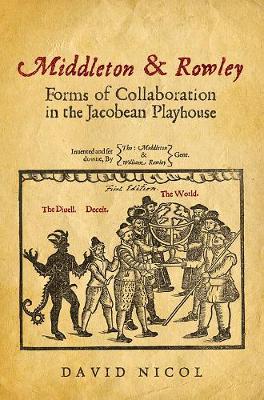Overview
Can the inadvertent clashes between collaborators produce more powerful effects than their concordances? For Thomas Middleton and William Rowley, the playwriting team best known for their tragedy The Changeling, disagreements and friction proved quite beneficial for their work. This first full-length study of Middleton and Rowley uses their plays to propose a new model for the study of collaborative authorship in early modern English drama. David Nicol highlights the diverse forms of collaborative relationships that factor into a play's meaning, including playwrights, actors, companies, playhouses, and patrons. This kaleidoscopic approach, which views the plays from all these perspectives, throws new light on the Middleton-Rowley oeuvre and on early modern dramatic collaboration as a whole.
Full Product Details
Author: David Nicol
Publisher: University of Toronto Press
Imprint: University of Toronto Press
Dimensions:
Width: 16.00cm
, Height: 2.20cm
, Length: 23.60cm
Weight: 0.500kg
ISBN: 9781442643703
ISBN 10: 1442643706
Pages: 277
Publication Date: 30 October 2012
Audience:
Professional and scholarly
,
Professional & Vocational
Format: Hardback
Publisher's Status: Active
Availability: Manufactured on demand

We will order this item for you from a manufactured on demand supplier.
Reviews
‘In this welcome study of working relationship between two early modern playwrights, David Nicol fuses new approach with old….This approach produces fascinating and often persuasive insights.’ - Mark Hutchings (SHARP News August 20, 2016) ‘For its attention to details of theatrical performance and its illuminating readings of multiple plays, Nicol’s book is an important contribution to the study of early modern authorship and collaboration.’ - Hetaher A. Hirschfeld (Early Theatre vol 17:01:2014) ""Nicol combines this critical project with a survey of different ways of imagining collaborative authorship prompted by the Middleton-Rowley canon… Nicol’s study is an important inquiry into the practises of collaborative authorship and a major contribution to recognizing Rowley. Nicol largely avoids the risk of defining the sense of each author’s creative disposition too narrowly, and his carful scholarship illustrates the productive insights to be gained from pursuing a separationist approach."" - Andrew Gordon (Renaissance Quarterly: Vol 67:02:2014)
'For its attention to details of theatrical performance and its illuminating readings of multiple plays, Nicol's book is an important contribution to the study of early modern authorship and collaboration.' -- Hetaher A. Hirschfeld
"‘In this welcome study of working relationship between two early modern playwrights, David Nicol fuses new approach with old….This approach produces fascinating and often persuasive insights.’ -- Mark Hutchings * SHARP News August 20, 2016 * ‘For its attention to details of theatrical performance and its illuminating readings of multiple plays, Nicol’s book is an important contribution to the study of early modern authorship and collaboration.’ -- Hetaher A. Hirschfeld * Early Theatre vol 17:01:2014 * ""Nicol combines this critical project with a survey of different ways of imagining collaborative authorship prompted by the Middleton-Rowley canon… Nicol’s study is an important inquiry into the practises of collaborative authorship and a major contribution to recognizing Rowley. Nicol largely avoids the risk of defining the sense of each author’s creative disposition too narrowly, and his carful scholarship illustrates the productive insights to be gained from pursuing a separationist approach."" -- Andrew Gordon * Renaissance Quarterly: Vol 67:02:2014 *"
'For its attention to details of theatrical performance and its illuminating readings of multiple plays, Nicol's book is an important contribution to the study of early modern authorship and collaboration.' -- Hetaher A. Hirschfeld Early Theatre vol 17:01:2014
Author Information
David Nicol is an assistant professor in the Department of Theatre at Dalhousie University.



